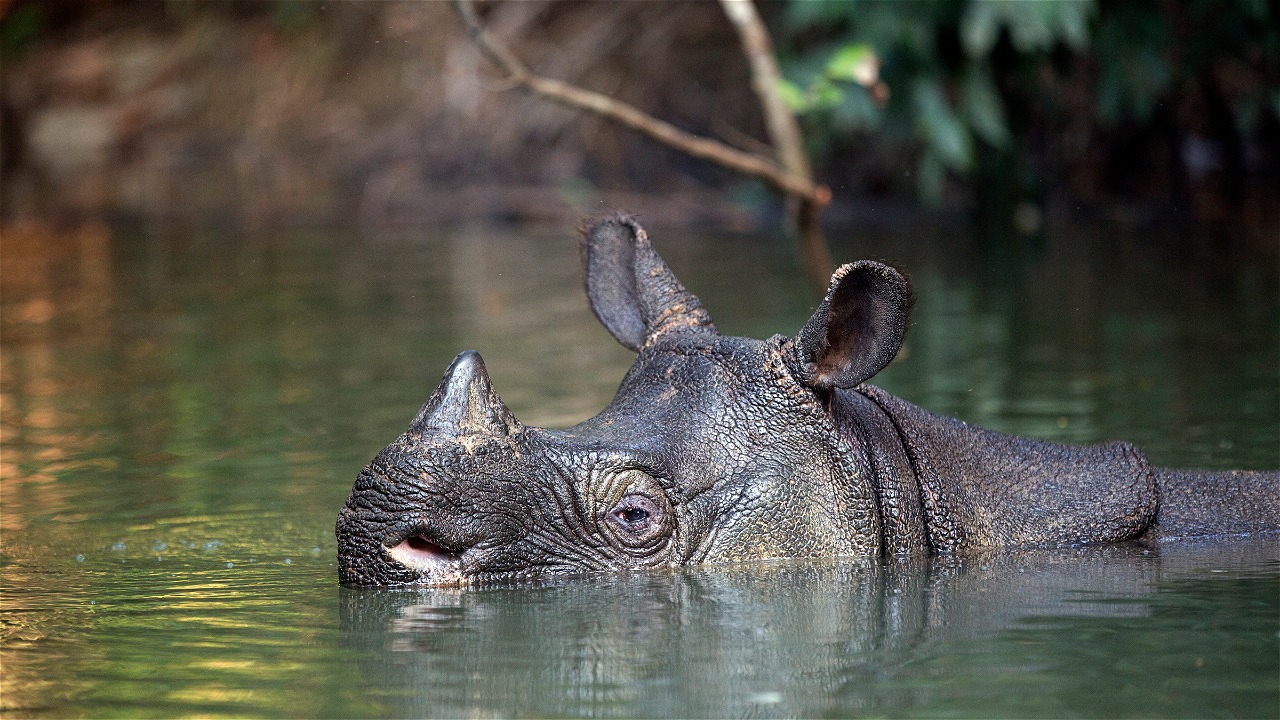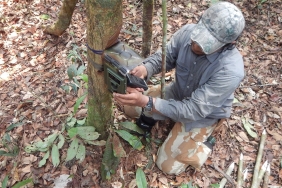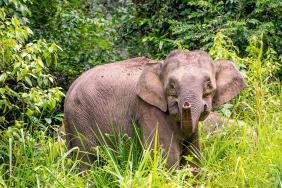LANGKAP, A THREAT TO JAVAN RHINO CONSERVATION
By: Nur Arinta
WWF has been working to save the Javan Rhino since 1962. At that time, WWF came to Indonesia through research to save the population of the Javan Rhino which was almost extinct, with a population of only about 20 individuals. In collaboration with the Ministry of Environment and Forestry (at that time the Ministry of Forestry), gradually the population of this one-horned animal increased until it stabilized at around 40-50 individuals based on surveys in the 1980s. Now the population of Javan Rhinos is 67 individuals.
The increase in the population of Javan Rhinos, which only exists in Ujung Kulon National Park (TNUK), has made the habitat area no longer sufficient. The current area of TNUK is 1,206 km2, while the range of a Javan Rhino can reach 20 km2. The lack of Ujung Kulon National Park area with the increasing number of Javan Rhinos has issued recommendations for rhino experts to find a second habitat.
In addition to the lack of area, another threat that is being faced now is the invasion of the Langkap plant, which inhibits the growth of Javan Rhino food plants. The Langkap plant (Arenga obtusifolia) is a plant from the Arecaceae (palem-paleman) family that is spreading very quickly, resulting in a decrease in the diversity of food plants for rhinos.
This palm species became invasive because it can reproduce by generative and vegetative means. Langkap plants reproduce generatively through seeds. One bunch of Langkap can produce about 315 to 1800 fruits, and one Langkap fruit has three seeds. The spread of these seeds. The spread of Langkap seeds is assisted by seed dispersing animals such as civets, rats, and birds. Another pattern of reproduction of the langkap plant is by vegetative means, namely through its roots which are often called tendrils. Tendrils that grow near the ground will enter the soil and grow to form new langkap shoots.
In addition to its breeding pattern, another reason that makes this plant invasive is that it can grow well in areas with minimal sunlight intensity. The invasion of the Langkap plant group creates a very dense canopy cover that inhibits the penetration of sunlight to the forest floor. The low intensity of sunlight that enters the forest floor makes the growth capacity of other plants reduced, even lost. This is what threatens the diversity of rhino food plants and certainly has a direct effect on the preservation of Javan Rhinos.
To overcome this, WWF-Indonesia has made various efforts such as monitoring, conducting research, and also controlling the langkap plant itself. WWF-Indonesia conducts langkap control which is intended to reduce the density of langkap in Ujung Kulon. This control is done manually and does not use chemicals. In addition to control, WWF-Indonesia also conducts monitoring to determine the effectiveness of control and its effect on the growth of Javan rhino food plants, as well as the use of space by Javan rhinos and other animals.
Other efforts in order to solve the Langkap problem, WWF-Indonesia together with Ujung Kulon National Park Center, Bogor Agricultural University, and Gajah Mada University have also developed a design for controlling Langkap plants in Ujung Kulon.
If theangkap plant invades the large Javan Rhino habitat in Ujung Kulon National Park, moving the habitat outside Ujung Kulon is one option that needs to be considered. The condition of Ujung Kulon National Park, which is also not free from the threat of Krakatau eruptions, earthquakes and tsunamis, is also another reason why a second habitat for Javan Rhinos is needed. Because if a tsunami occurs and the Javan Rhino population is only in Ujung Kulon, it is certain that we will lose this world heritage animal that is the pride of Indonesia.





